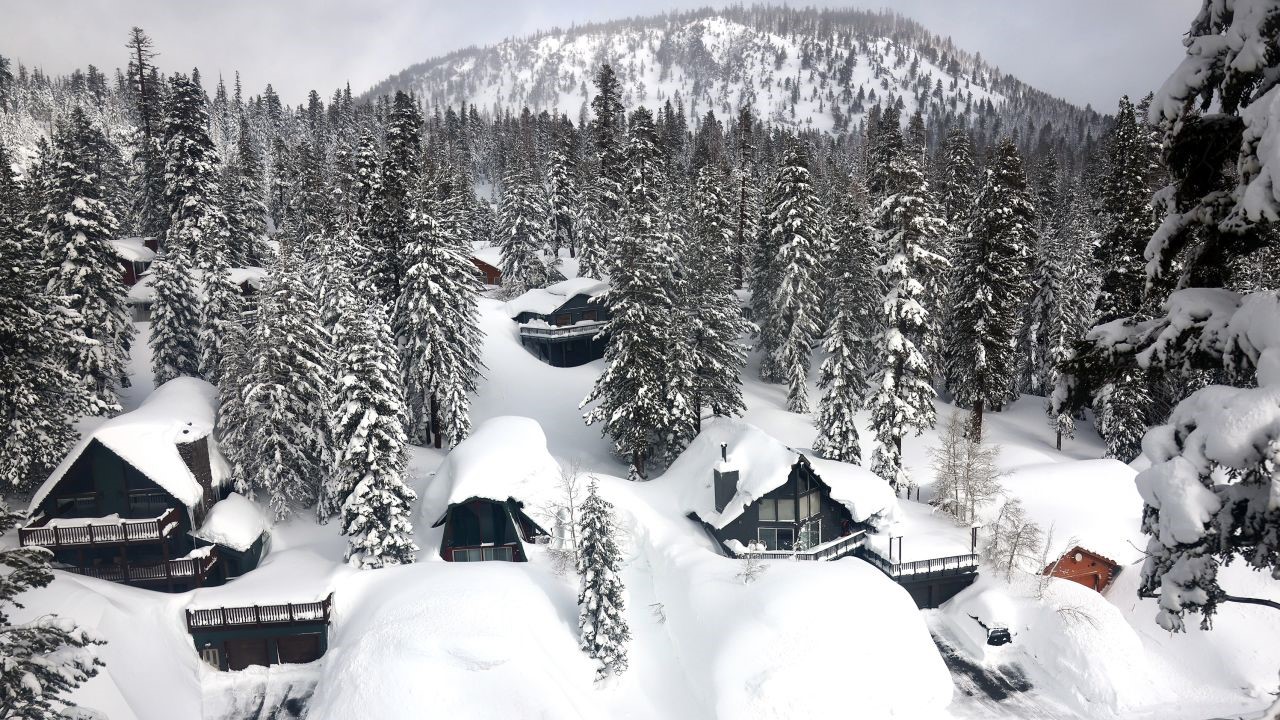New maps show where snowfall is disappearing
Snowfall is declining globally as temperatures warm because of human-caused climate change, a new analysis and maps from a NOAA climate scientist show.
Less snow falling from the sky isn’t as innocuous as just having to shovel less; it threatens to reinforce warming, and disrupt food and water for billions of people.
Climate scientists say the future of snowfall is pretty clear: A warmer world driven by human pollution means precipitation is more likely to fall as rain than snow, all else being equal.
It’s possible in the near term that climate change will cause more extreme winter storms and some years of increased snowfall — like the data shows for the Northeast US — but as global temperature warms, there will be fewer of those years, and eventually we could see snowfall amounts fall off a cliff.
“Eventually the laws of thermodynamics mean that as you keep warming you’re just going to transition more and more of that snow over to rain,” said Brian Brettschneider, a climate scientist with the National Weather Service in Alaska and the brains behind the data analysis in this story. “You can get away with things for a little bit, and it can hide some trends, but overall the laws of thermodynamics will win out.”
Snow also isn’t going to decline linearly, or at a 1-to-1 rate, with rising temperatures, said Justin Mankin, a climate scientist and associate professor of geography at Dartmouth College. Instead, there is more of a tipping point, which would mean that once a certain temperature threshold is reached, “we should expect the losses to accelerate.”
“It means we can expect a lot of the places that haven’t exhibited massive snowfall declines to maybe start to exhibit them with just a little bit more warming,” Mankin told CNN.
There has already been a 2.7% decline in annual global snowfall since 1973, according to Brettschneider’s analysis of data from the European Union’s Copernicus Climate Change Service. The downward trend is particularly notable in the Northern Hemisphere’s mid-latitudes — the middle area north of the tropics and south of the Arctic, where the US and much of the world’s population resides.
The sun is more direct there compared to the higher latitudes, especially during spring and fall when it still snows. The white of snow acts like a car’s sun shade, deflecting sunlight and its heat back to space. Without it, more sunlight is absorbed by the ground, warming the atmosphere.
Less snow falling from the sky also means less snow piling up into snowpack — a deep, persistent cover of snow that accumulates during the winter. It is crucial for water supplies because it acts like a natural reservoir, storing water as snow during wet times and then releasing it in the form of snowmelt when water is harder to come by, University of Washington environmental engineering professor Jessica Lundquist told CNN.
The threat to water supplies from declining snow is most pronounced in climates subject to more extreme boom-and-bust cycles of precipitation, like the Mediterranean climate found in California and other parts of the American West, Lundquist said.
“California is the poster child — it does not rain in the summer in California, and so the snowmelt runoff, the snow that waits and runs off later in the season, is absolutely essential for all of the ecosystems, all of the agriculture, all of the cities or anyone who wants water during the dry season,” Lundquist told CNN.
Snowpack provides water to more than 50% of the water supply in the arid West, a 2017 study found. The same study predicted snowpack levels in the West would continue to decline by more than one-third by 2100 under a high increase of planet-warming pollution scenario. - Reports CNN





